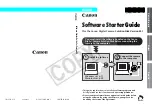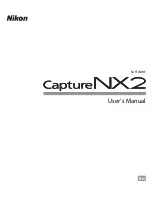
Verifying
127
There are a number of ways to specify what information to display about queried packages. The
following options are used to select the type of information for which you are searching. These are
called
Package Query Options
.
•
-i
displays package information including name, description, release, size, build date, install date,
vendor, and other miscellaneous information.
•
-l
displays the list of files that the package contains.
•
-s
displays the state of all the files in the package.
•
-d
displays a list of files marked as documentation (man pages, info pages, READMEs, etc.).
•
-c
displays a list of files marked as configuration files. These are the files you edit after installation
to adapt and customize the package to your system (for example,
sendmail.cf
,
passwd
,
inittab
, etc.).
For options that display lists of files, add
-v
to the command to display the lists in a familiar
ls -l
format.
10.2.7. Verifying
Verifying a package compares information about files installed from a package with the same
information from the original package. Among other things, verifying compares the size, MD5 sum,
permissions, type, owner, and group of each file.
The command
rpm -V
verifies a package. You can use any of the
Verify Options
listed for querying to
specify the packages you wish to verify. A simple use of verifying is
rpm -V foo
, which verifies that
all the files in the
foo
package are as they were when they were originally installed. For example:
• To verify a package containing a particular file:
rpm -Vf /usr/bin/foo
In this example,
/usr/bin/foo
is the absolute path to the file used to query a package.
• To verify ALL installed packages throughout the system:
rpm -Va
• To verify an installed package against an RPM package file:
rpm -Vp foo-1.0-1.i386.rpm
This command can be useful if you suspect that your RPM databases are corrupt.
If everything verified properly, there is no output. If there are any discrepancies, they are displayed.
The format of the output is a string of eight characters (a
c
denotes a configuration file) and then the
file name. Each of the eight characters denotes the result of a comparison of one attribute of the file to
the value of that attribute recorded in the RPM database. A single period (
.
) means the test passed.
The following characters denote specific discrepancies:
Содержание ENTERPRISE LINUX 5 - VIRTUAL SERVER ADMINISTRATION
Страница 22: ...xxii ...
Страница 28: ......
Страница 36: ...10 ...
Страница 40: ...14 ...
Страница 96: ...70 ...
Страница 116: ...90 ...
Страница 144: ...118 ...
Страница 146: ......
Страница 158: ...132 ...
Страница 165: ...Installing and Removing Packages 139 Figure 11 7 Installing and removing packages simultaneously ...
Страница 166: ...140 ...
Страница 172: ...146 ...
Страница 178: ......
Страница 228: ...202 ...
Страница 264: ...238 ...
Страница 318: ...292 ...
Страница 330: ...304 ...
Страница 388: ...362 ...
Страница 428: ...402 ...
Страница 452: ......
Страница 458: ...432 ...
Страница 476: ...450 ...
Страница 478: ...452 ...
Страница 494: ...468 ...
Страница 498: ...472 ...
Страница 530: ...504 ...
Страница 536: ...510 ...
Страница 544: ...Chapter 36 Log Files 518 Figure 36 7 Log file contents after five seconds ...
Страница 546: ......
Страница 550: ...524 ...
Страница 576: ......
Страница 584: ...558 ...
Страница 608: ......
Страница 776: ...750 ...
Страница 796: ...770 ...
Страница 800: ...774 ...
Страница 804: ......
Страница 806: ...780 ...
Страница 808: ...782 ...
Страница 816: ...790 ...
Страница 820: ...794 ...
Страница 822: ...796 ...
Страница 830: ...804 ...
Страница 836: ...810 ...
Страница 844: ...818 ...
Страница 848: ...822 ...
















































